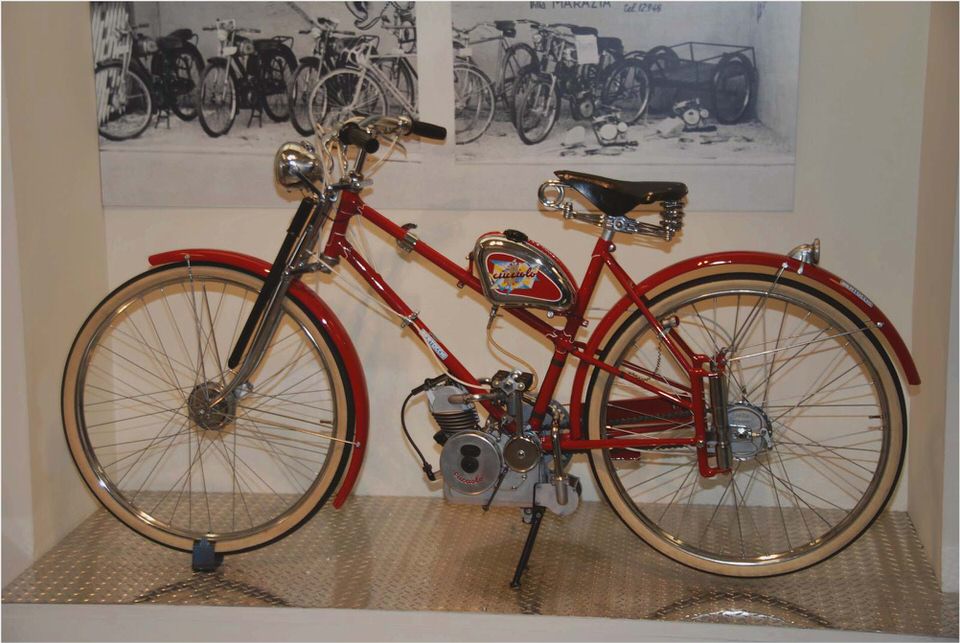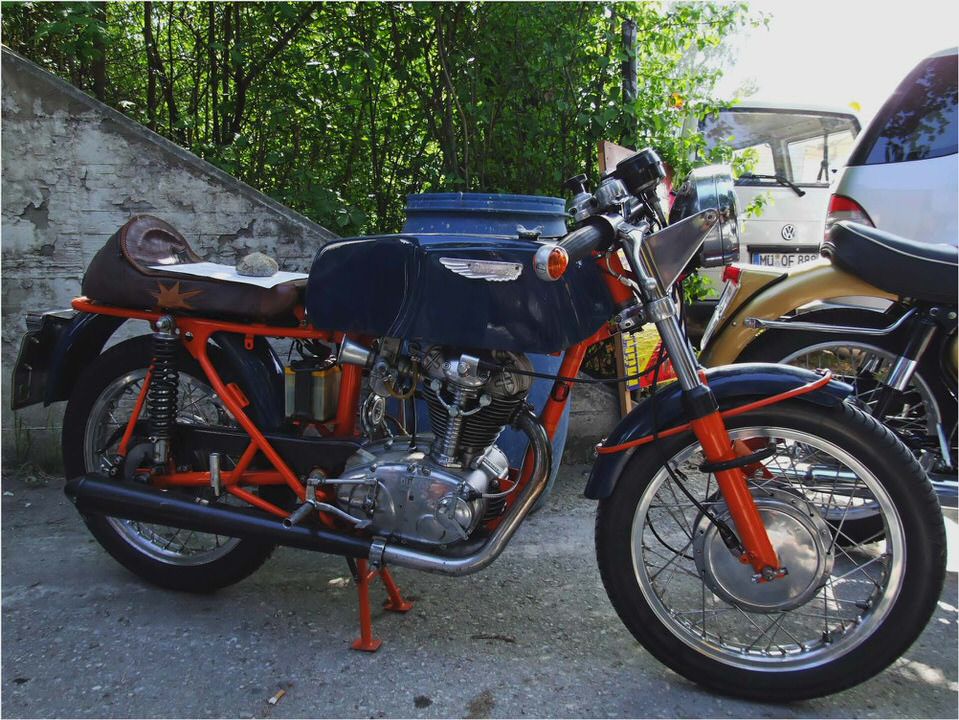
Image gallery
Located at the Ducati Factory headquarters, the 1000 sq/mt Ducati Museum highlights 50 years of racetracks heritage.
The Ducati Museum opened on June 12, 1998, during the first annual WDW (World Ducati Week), and was officially inaugurated on October 16th later that year. The Museum has preserved over half a century of Ducati racing history and also the history of the company (before it produced motorcycles) founded by the Ducati brothers in 1926.
From the popular Cucciolo to the more recent breakthrough with the Desmosedici, the museum is arranged around an illuminated racetrack that hosts 33 legendary motorcycles with a special spectator area housed in a gigantic red helmet.
Adjacent to the track is a set of seven thematically organized rooms . prepared by Livio Lodi, Curator of the Museum, which highlight the history and emotions that have built Ducati into a success.
It is a true product of our time . says Livio Lodi through which older generations of Ducatisti can relive the splendor of an age that seems to have disappeared, while the younger generations can discover the importance of Ducati’s vast and rich history. Finally, a huge dream has come true for all of those who love the ‘red’ of Borgo Panigale.
The planning and design of the museum were entrusted to architects Pietrogrande and Martera with Studio Associates, and construction was carried out by ICET.
ROOM 1 – CUCCIOLO, THE ORIGINAL DUCATI
With the end of World War II, Italy found itself with little money and a desperate need for transportation.
The inexpensive Ducati moped arrives providentially on the market on 1946 .
Designed during the war by two loyal Motociclismo magazine freelancers – lawyer Aldo Farinelli and his brother, engineer Enzo Furio – the Cucciolo, with its two-speed gearbox, was able to carry two passengers and tackle the steep hills so common in Italy. Moreover, being a four-stroke (with overhead valves!) it could cover 100 kilometers with just a liter of petrol without dirtying the spark plugs. Other mopeds, almost all two-strokes, consumed greater amounts of petrol and had spark plugs that frequently needed cleaning.
The Cucciolo was not simply a popular vehicle for use around town. It also won in tourism and sport competitions, including the 18,000 kilometer Paris-Tokyo ride in 1949 and the world speed records at Monza in 1950. The Cucciolo won on the circuit at Zitelli and many other racetracks in the 50s, including the Six Day International off-road competition in 1951 with Tamarozzi.
Finally, let us not overlook the Cucciolo’s other considerable achievement – that of launching Ducati into the motorcycling firmament.
ROOM 2 – MARIANNA
The 100 and 125 Gran Sport motorcycles represent milestones in Ducati history, forerunners of both sporting and commercial successes. In fact, it was with the Gran Sport bikes – affectionately called the Marianna – that Ducati began its racing success.
ROOM 3 – SINGLES AND TWINS CYLINDERS
Wide-case production models represent the pinnacle of Ducati singles, motorcycles characterized by a single camshaft driven by bevel gears. A direct descendent of the narrow-case family, the 250 and 350 versions of the wide-case models were first produced in the spring of 1968, with the 450 added the following year. The performance and elegant mechanics of the bikes immediately caught the attention of enthusiasts worldwide.
ROOM 4 – DUCATI BEVEL-DRIVE ENGINE
The development of the first multi-cylinder Ducati production engine was in the early 1970s, in the form of engineer Taglioni’s groundbreaking bevel-drive 90-degree V-twin design, marked a radical change of direction at the company. Ducati was now on the path to its present supremacy in sportbike engineering.

Until this moment, the largest capacity Ducati motorcycle yet build had been a 450 single.
The advent of the 750cc V-twin range – developed in prototype form via the 500cc Grand Prix bikes which raced in 1971- not only established Ducati credentials as a big-bike manufacturer, it also set a benchmark of technical merit.
ROOM 5 – THE PANTAH FAMILY
Introduced as a 500 in 1979, the Pantah engine was designed and created by engineers Fabio Taglioni and Gian Luigi Mengoli. It formed the basis of Ducati production and racing program for years to come. So advanced was the design that it was still in production throughout the 1980s. Derived from the four-valve Armaroli 500cc Grand Prix engine of 1973, the two-valve single overhead camshaft Pantah used a toothed belt camshaft drive instead of the earlier bevel-gears.
Other important technical developments were the racing-inspired 60 included valve angle and the forged one-piece crankshaft. These features improved the bike’s reliability and made the design more suitable for competition.
ROOM 6 – DUCATI IN WORLD SUPERBIKE CHAMPIONSHIP
Ducati history will forever be linked with the World Superbike Championship simply because without Ducati there may never have been a World Superbike Championship in the first place. When the series began in 1988, Ducati was a vital part of the new World Championship series, and one of only two European manufacturers competing against the mighty powers of Japan. It was also the only twin-cylinder motorcycle.
ROOM 7 – THE DESMOSEDICI AND THE RETURN TO THE MOTOGP
As predicted, after an incredible dream like season the Ducati Desmosedici has won the hearts of new and old lovers of Ducati. This new room created in its honor was inaugurated during World Ducati Week 2004.
The description comes from the website of the Ducati Museum: http://www.ducati.com
- 1098 – Monster S4r… – Ducati Superbikes
- 2012 Mercedes-Benz SLK 55 AMG and Ducati Streetfighter 848
- Rossi Quits Ducati For Yamaha
- 2009 Ducati Superbike 848 – 1198 – 1198 S – 1098 R – 1098 R – Bayliss…
- Bikes Ducati

